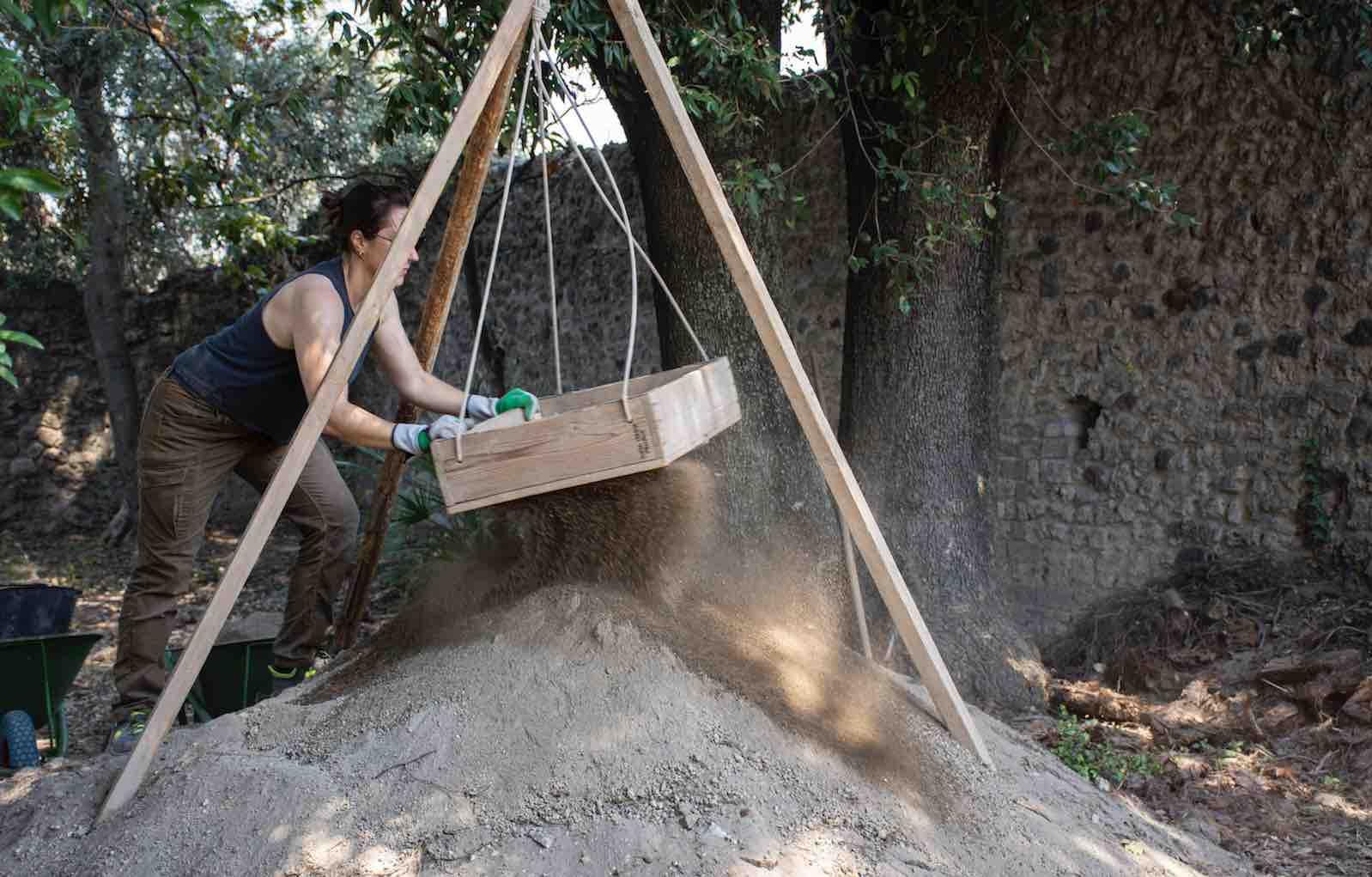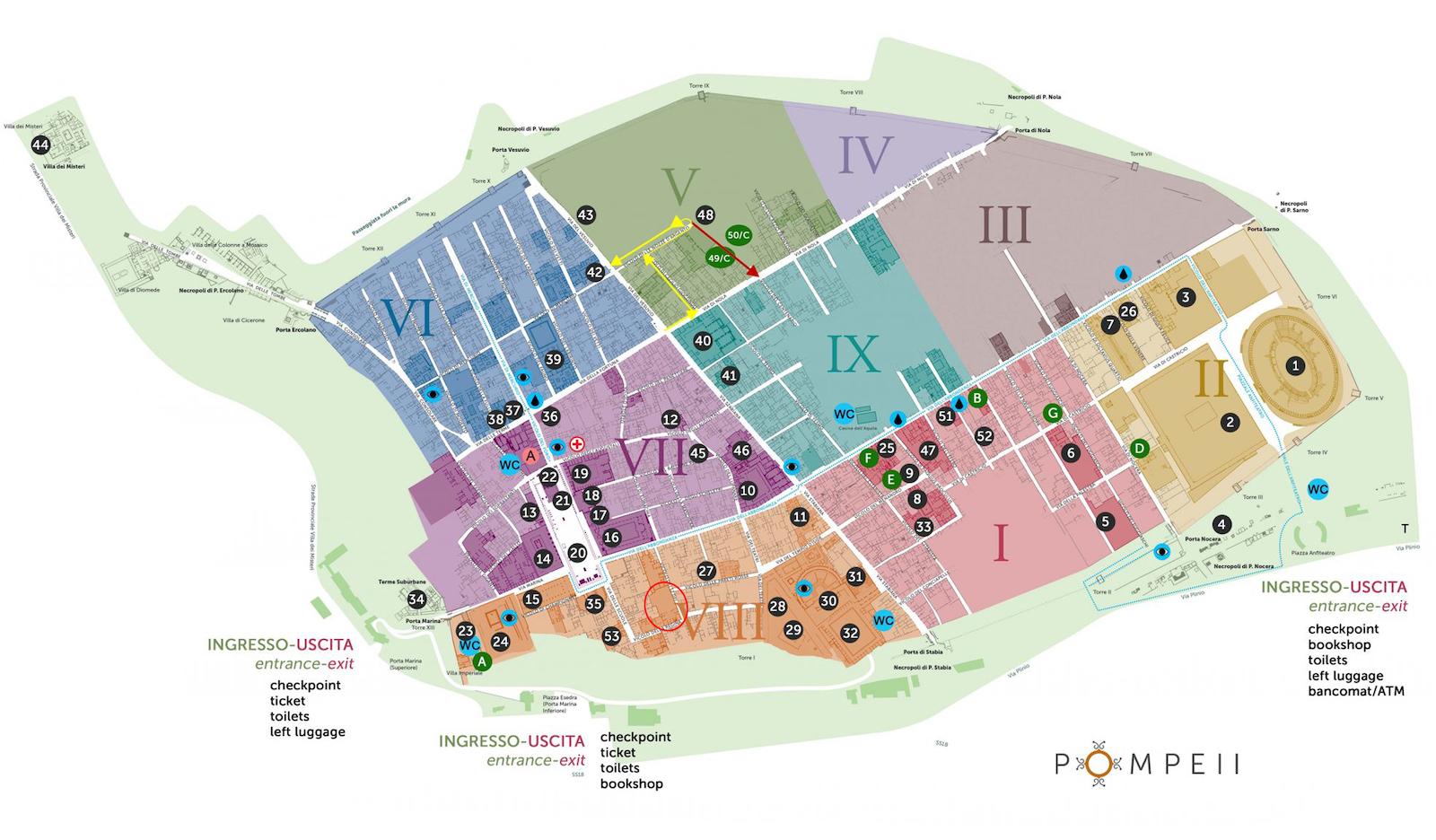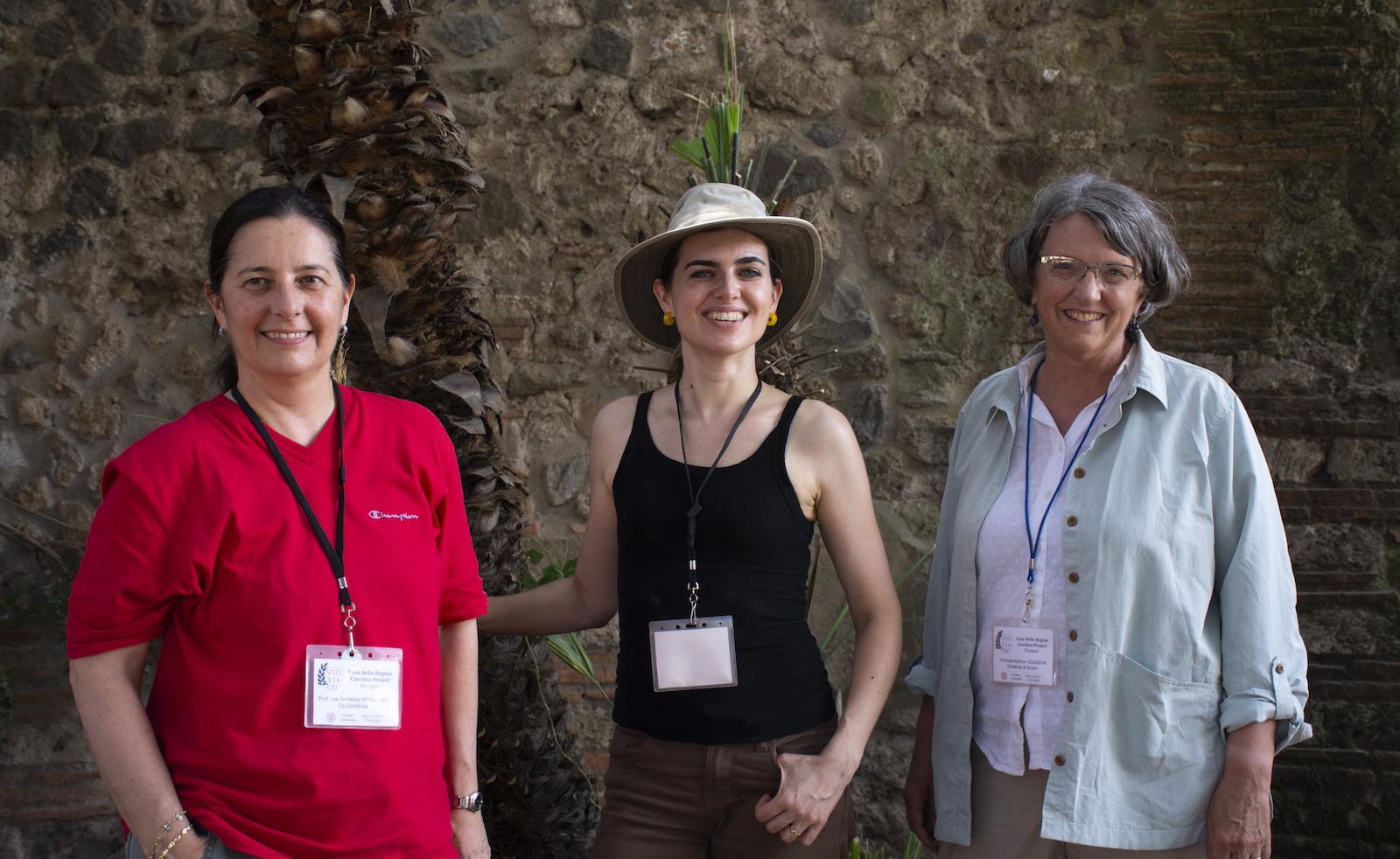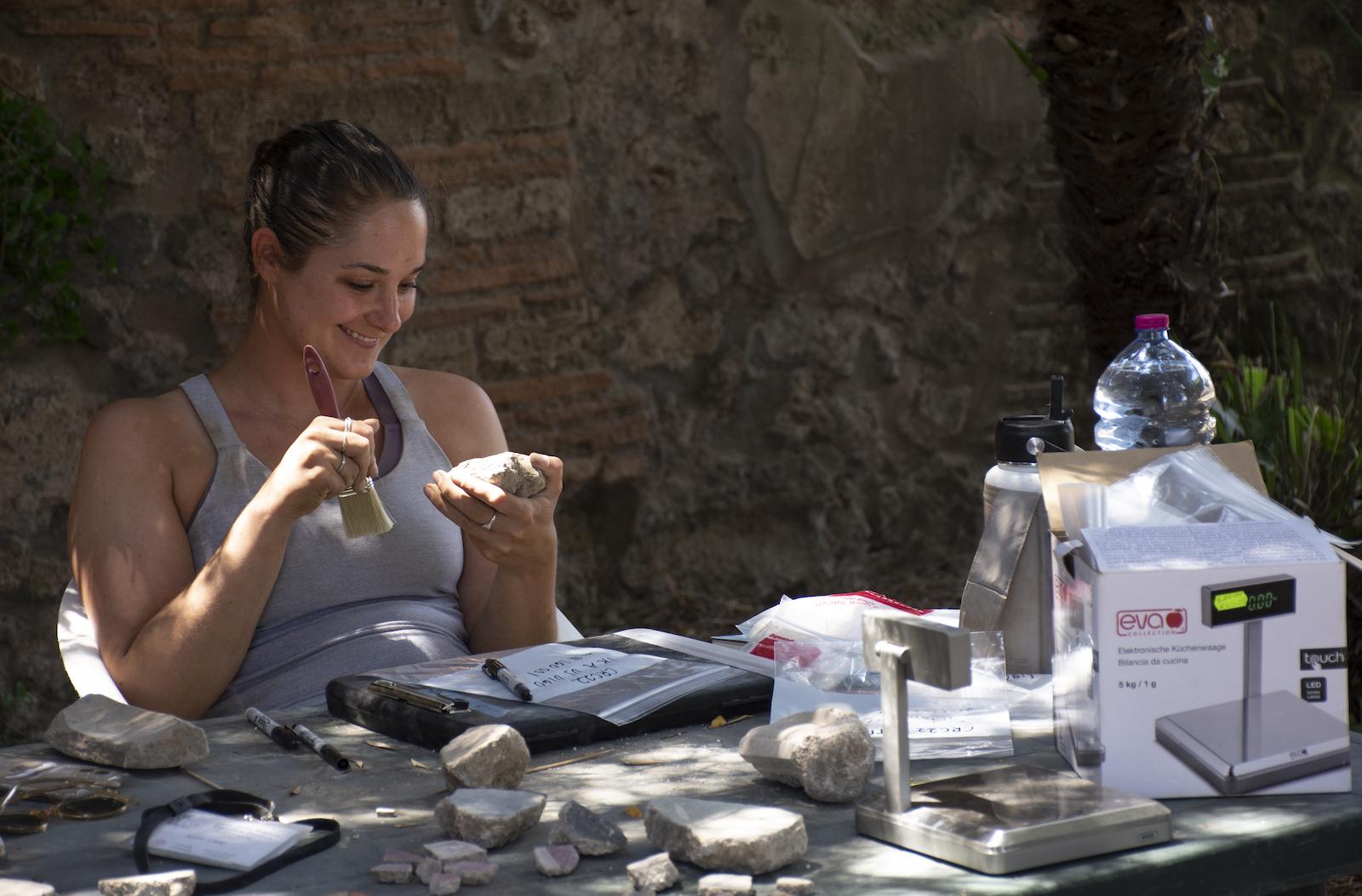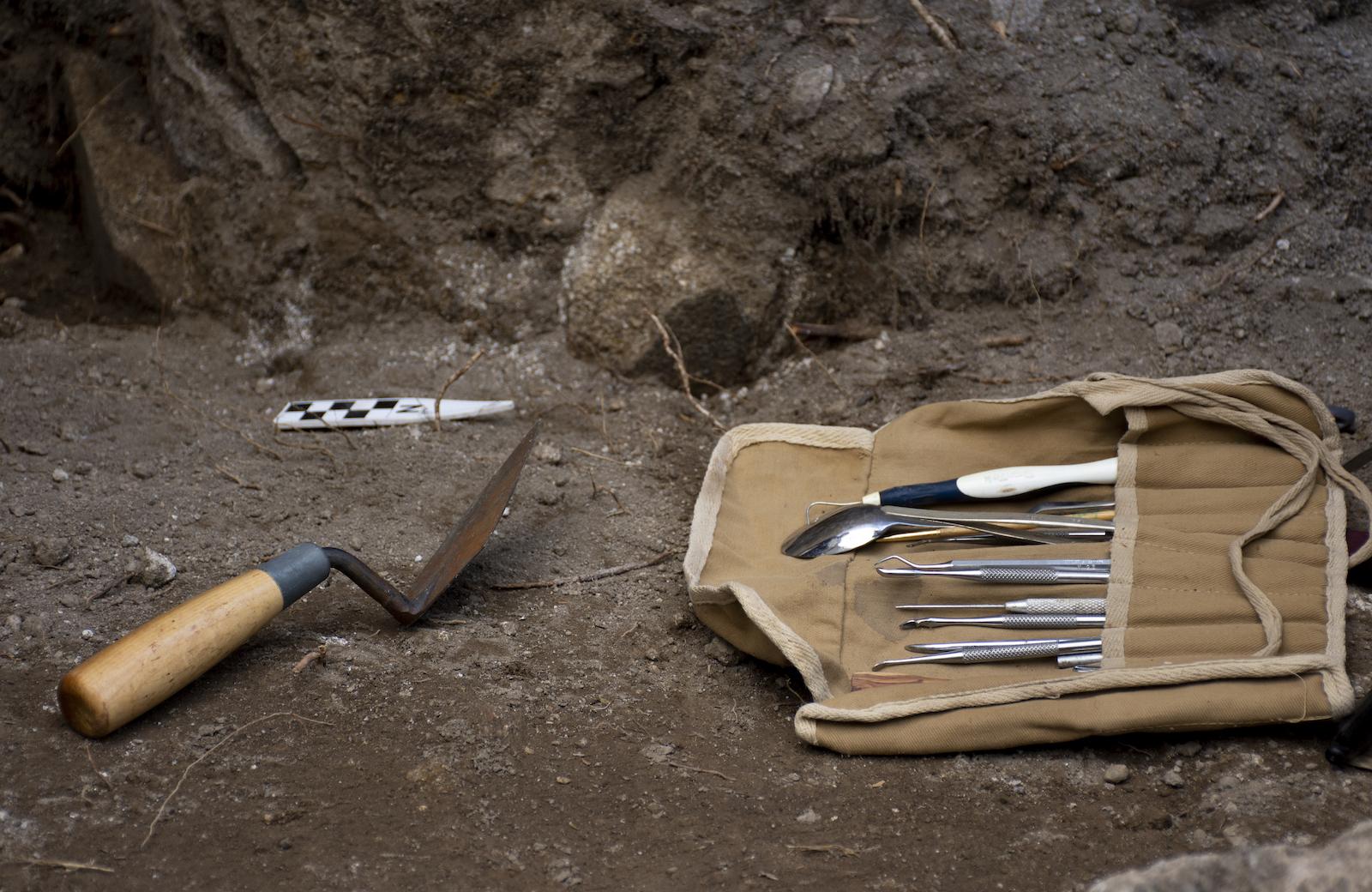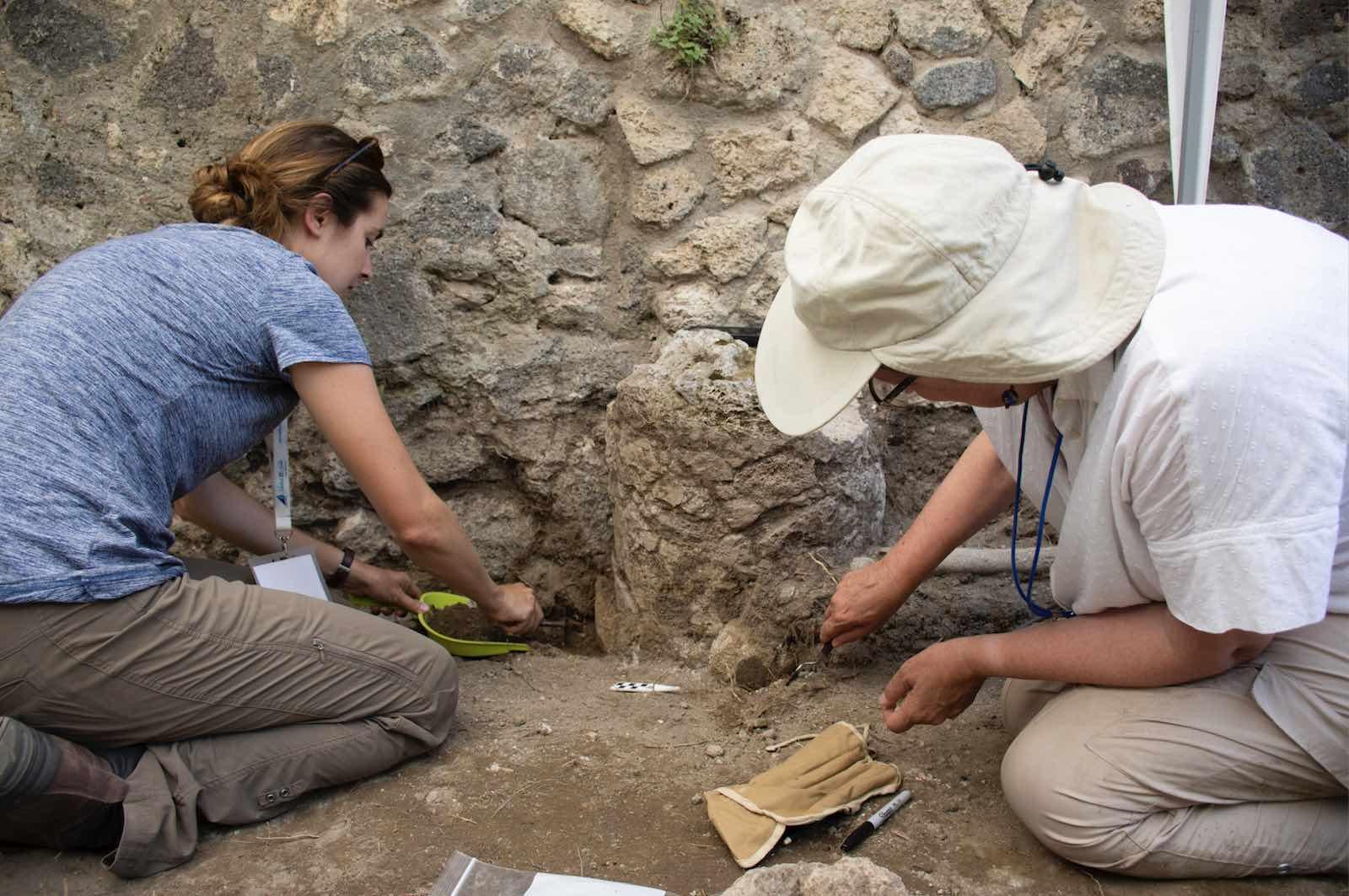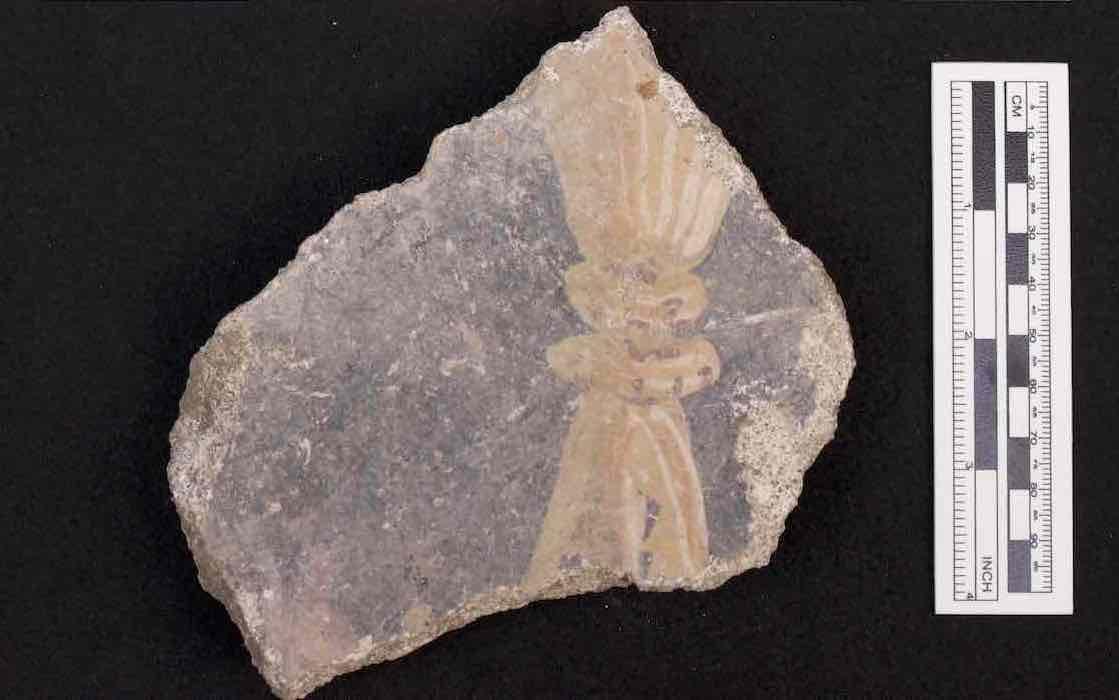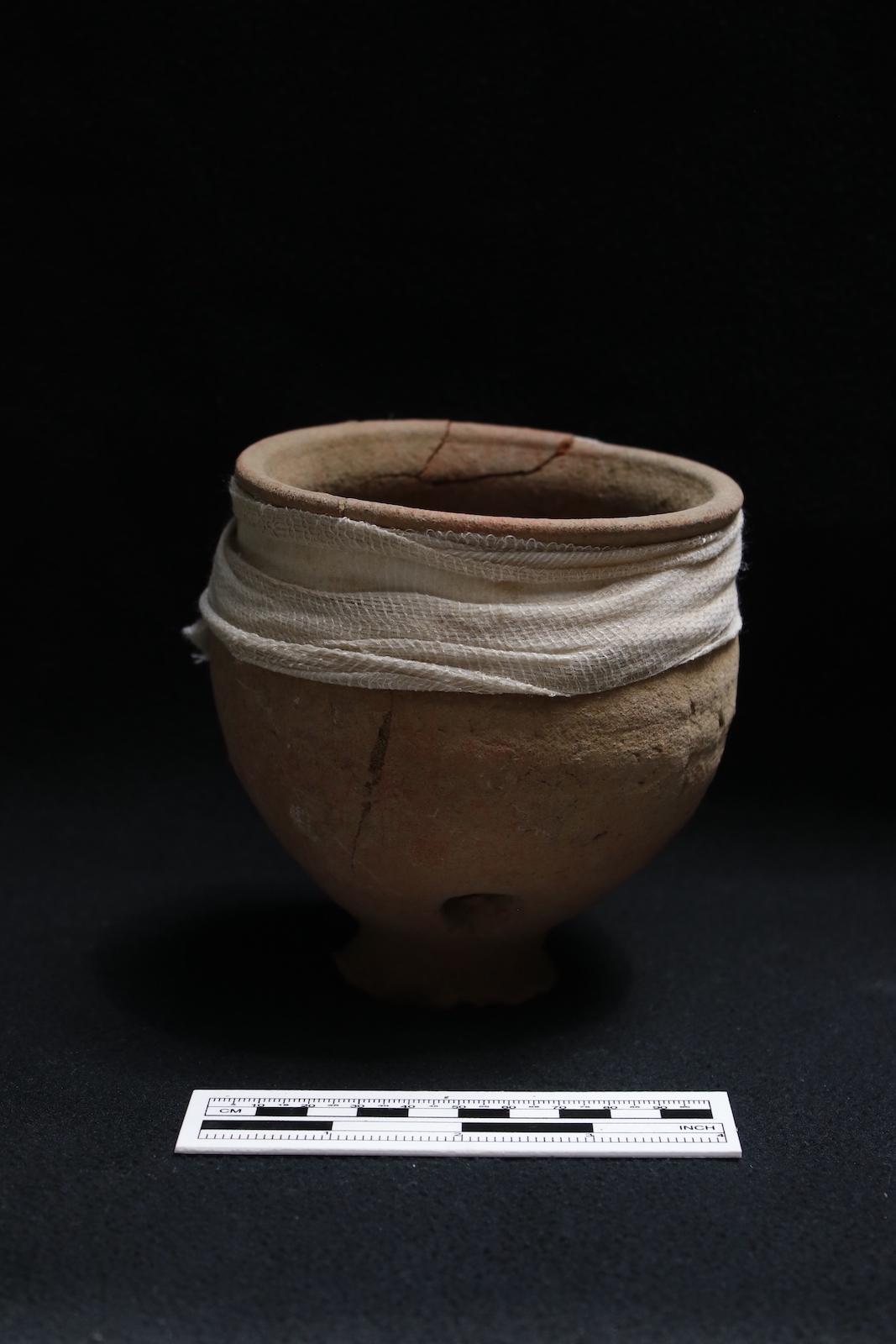Dr. Kathryn Gleason (Cornell University) is a specialist in landscape architecture and ancient gardens, interested in the relationships between how the garden was designed and planted, and what we can understand of people’s experiences of it. Considering the home’s central location just around the corner from the city’s bustling forum, the garden’s ability to transform one’s spatial perception is of particular interest for her.
Dr. Annalisa Marzano (University of Reading; University of Bologna) focuses on the socio-economic aspects of the garden and home. She looks at how the house’s prime location to the center of Roman life and the garden’s potential economic productivity can intersect with more domestic and leisurely aspects of Roman domestic life, as well as interact with Pompeiian economic activity more broadly.
Dr. Caitlín Barrett (National Geographic Explorer; Cornell University) brings a background in Roman household archeology and seeks to look more closely at how ancient religion and ritual were woven into the fabric of the home through the garden’s two shrines. She is especially interested to show how the ancient home was at the intersection of many different categories and facets of life. While it might seem difficult to mediate between three unique sets of research interests, the project directors have combined their inquiries in meaningful and illuminating ways such that they have produced a more holistic view of the ancient home and its place in Roman society.




